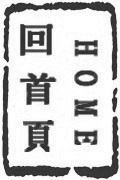
Texture
质地/Zhi1 Di4
n/a
CHEARS: False
EARS: True
CMT: False
EARS2 Encyclopedia: False
CHEARS:
EARS:
This visual and tactile analogy has frequently been used in describing music.
In its most general musical sense, the term is frequently used in a highly inconsistent fashion. It is variously used to describe vocal and instrumental resources employed, synonymous with timbre and sonority, vertical density and construction of voices and parts, interval spacing within chords, and the nature of monophonic, homophonic, heterophonic, polyphonic and EARS:
contrapuntal musical constructions.
In electroacoustic music, texture is a highly useful term in describing the character of sounds and various structural levels of sequences of sounds in terms of their overall behaviour and internal details and patternings.
Denis Smalley uses the term, in a pairing in conjunction with Gesture, as a structuring principle of electroacoustic music that is fundamental to his spectromorphological theory.
EARS 2:
Textures make up a big part of music.
We will explore and learn how we can use them in our own compositions.
What is Texture?
Texture is a term that can be used to describe the consistency of sounds. It can be related to many of the parameters of sound such as, density, layering, timbre / sound quality and described in terms of the relative thickness, activity or pitch range.
Textures might be light, or they might be heavy and dense. They might be smooth and similar, or rough and different.
Fact
Textures are sometimes described as the opposite of Gestures.
Creating Textures
It is much easier to understand sound texture if we create some sounds.
Use the following list perform actions that will create sounds. Use whatever you have available.
Activity
Listen to the sounds that you create and discuss.
•Which are the most immersive textures (the ones that draw you in and surround you).
•How would you describe the properties of these textures?
•How does the sound change when groups of people make the sounds instead of individuals?
Are some sounds more gestural than textural? How might you change the way that you create sounds to make them more textural?
Composition Tip
Denis Smalley described how Textures give the impression of frozen time. So if you want to give the impression of stasis you should use textures.
Extra
Full List
•Shake
•Tear off
•Brush
•Caress
•Crack
•Rip
•Fall down
•Touch lightly
•Hit
•Crumple
•Rub
•Slide
•Scratch
•Hammer
•Oscillate
•Strike
•Bounce
•Stir
•Reverberate
•Roll
•Blow
•Drum fingers
•Turn
•Vibrate
参看其它/See Also
术语翻译/Terms Translator
术语校对/Terms Proofreader
术语顾问/Consultant to terminology
参考文献/Bibliography
讲座/Lecture
评论/Comments
发表评论(预先注册)/Add comment on this term(members ONLY)